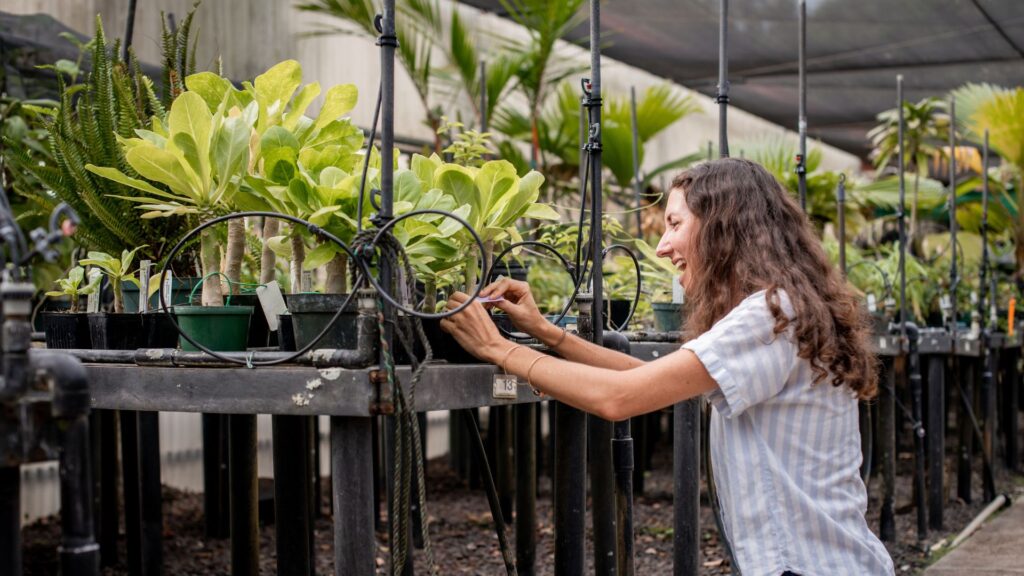NTBG’s latest alula research was recently published by Applications in Plant Sciences
For nearly six decades, the National Tropical Botanical Garden (NTBG) has been saving plants. Among the many rare and endangered plant species NTBG is known for conserving is the genus Brighamia, a member of the bellflower family (Campanulaceae), endemic to (found only in) Hawaii. Called alula in Hawaiian, both species — Brighamia insignis and Brighamia rockii — grow on Hawaii’s steep slopes and high sea cliffs. In the 1990s, National Geographic famously photographed two NTBG botanists rappelling over Kauai’s Na Pali coast, collecting plant material to propagate in the nursery.
In the decades since, Brighamia rockii has dwindled to just eleven known plants that cling to the cliffs of Molokai. Its close relative, Brighamia insignis, last seen on Kauai, is now believed to be extinct in the wild. However, thanks to the efforts of NTBG and others, the alula has been successfully cultivated and is even commercially available as a houseplant in Europe and elsewhere. NTBG staff and scientists continue to conserve and study the alula with ongoing research featured in the most recent issue of Applications in Plant Sciences, a publication of the Botanical Society of America.

In an article co-lead authored by NTBG conservation biologist Seana Walsh, scientists show how the adaptation of pedigrees used by the zoo community can be used to manage botanical garden collections and reduce inbreeding, resulting in healthier plants. Researchers selected Brighamia insignis as their case study. Their findings illustrate the importance of maintaining diversity through strategic cross pollinations.
In the same issue, seedbank and laboratory manager Dustin Wolkis lead authored an article about seed dormancy and germination of Brighamia rockii. The authors found that a high percentage of the seeds germinate over a range of temperatures and are suitable for propagating from seed for conservation. Research suggests these seeds are unlikely to form a long-live soil seed bank and will need human intervention to be reintroduced into the wild.
By continuing to study and conserve this charismatic native Hawaiian plant genus, collaborating with likeminded organizations and institutions, NTBG is playing a leading role in advancing the understanding of rare and endangered plants and ensuring the preservation of irreplaceable biodiversity.